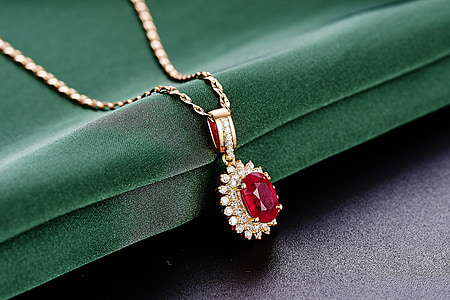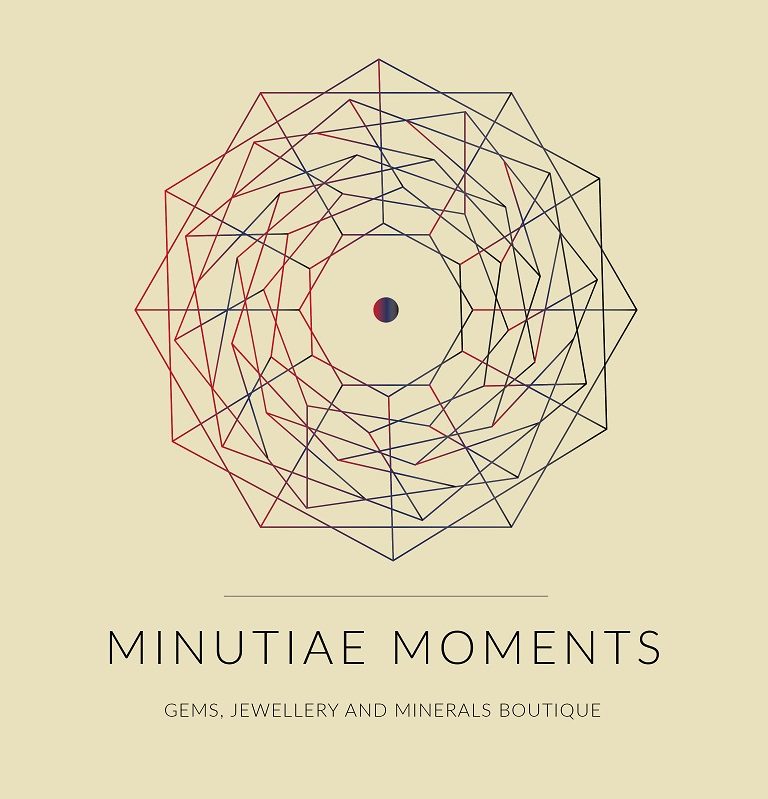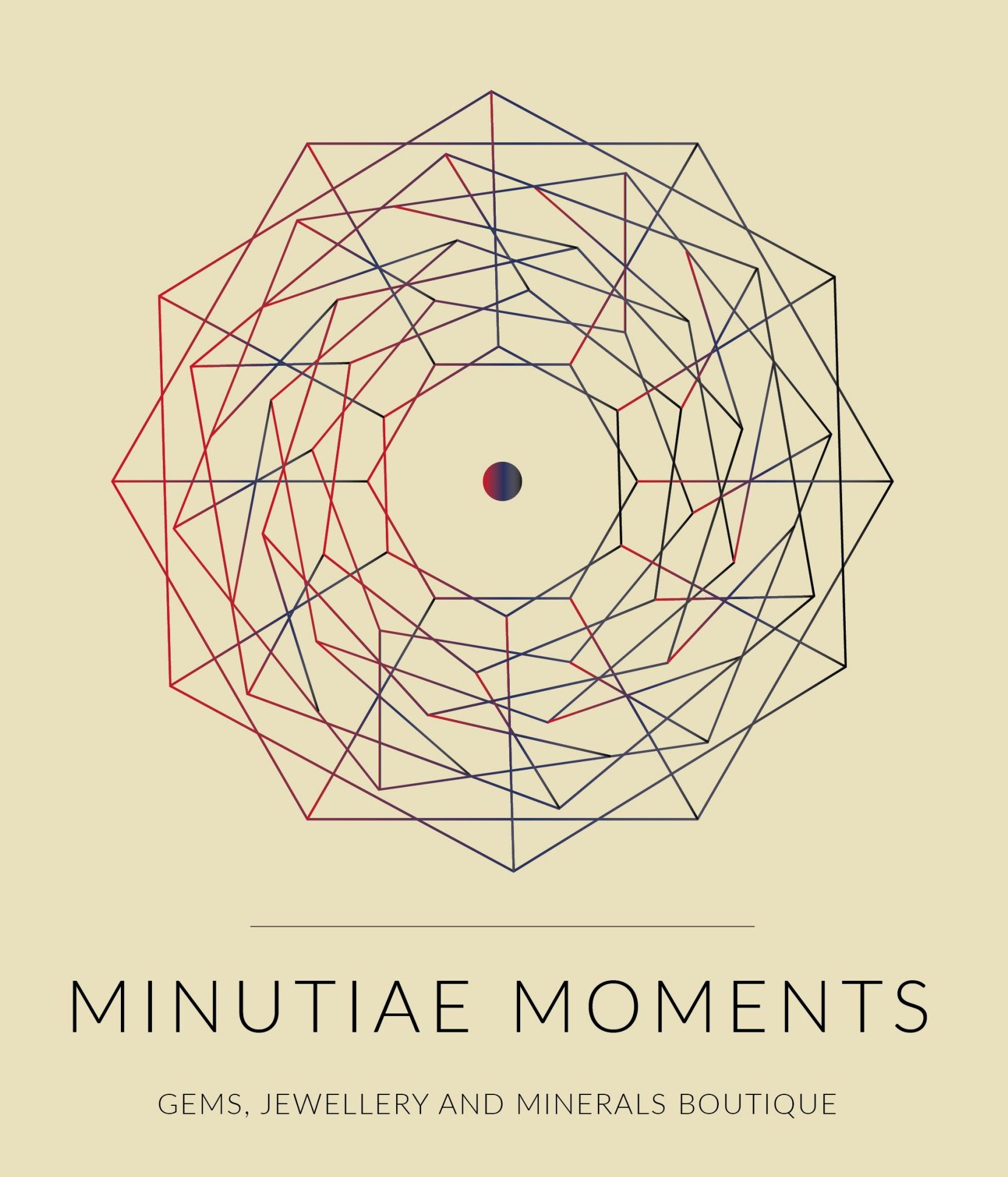
Red Gemstones List – My Top 10
If you are a fan of the red color gemstones and searching for a list of different types, properties, advantage and disadvantages, you are in the right place. The purpose of this article is to come up with a red gemstones list with all the important information of each stone.
Red Gemstones List
Following red gemstones list is not created in any specific order. The list is followed by details of each gemstone and I will cover advantages and disadvantages of each different stone. Depending on those, you can select the best stone for your requirement.
- Red Diamond
- Ruby
- Red Spinel
- Garnet
- Red Topaz
- Rubellite
- Red Zircon
- Red Agate
- Bixbite (Red Beryl)
- Red Jade
Let’s go through the details one by one.
1. Red Diamond
Diamonds are a rare type of gemstone and also one of the most expensive. Red diamond is the rarest type of diamonds and hence it is the most valuable as well.
Diamonds are the hardest material on earth with a hardness of 10 in the Moh’s scale and therefore it is the ultimate scratch resistant material. But diamonds are not as tough as sapphire and it can chip or crack if faced with a hard knock.
There are different tones of red diamonds available and as per GIA classification, the highest ratings goes for the “fancy vivid” color diamonds.
Synthetic red diamonds are also available in the market and hence, buying from a highly trusted source such as Leibish is recommended.
You can check their red diamond prices here.
| Physical Properties | Advantages | Disadvantages |
| Hardness – 10
Refractive Index – 2.417 – 2.419 (Refractive index is a measurement of the brilliance/luster of a gemstone) |
Extremely rare and hence it will be a highly unique possession.
Diamonds are the most durable gemstone and also the gemstone with the highest luster. |
Very high prices
Hard to find |
2. Ruby
Ruby belongs to the corundum mineral family and it is the red variation of sapphire. “Ruby” is the trade name used for red corundum and the term “Red Sapphire” is not used in the industry. It is also one of the most popular gemstones in the world.
Heat treatment to enhance the color is very common for rubies. Heat treatment is an accepted treatment type in the industry and it should not be a problem as long as it is disclosed. Natural untreated rubies are rare and more expensive. If a seller is claiming a ruby to be natural, you should always request for the gemstone certificate mentioning the treatment type.
Ruby has a hardness of 9 in the Moh’s scale of hardness which is second only to diamond. Due to its compact structure and absence of cleavage, rubies are more resistant to cracking and chipping than diamond.
| Physical Properties | Advantages | Disadvantages |
| Hardness – 9
Refractive Index – 1.76 – 1.77 |
A unique and a rare gemstone.
High durability and high brilliance. |
It is an expensive gemstone |
3. Red Spinel
Spinel is another very popular and a beautiful gemstone, and red and blue spinels are the most expensive. There are quite few different shades of red spinel. “Pigeon Blood” red spinels were misidentified as rubies throughout the history until the two were differentiated in the 19th
century. Therefore, it is a great alternative for ruby. Another fascinating variation of red spinels is “Jedi” spinel which has a bright neon red color.
Spinel has a hardness of 8 in the Moh’s scale of hardness and a refractive index of 1.71. Therefore, this stone is a very durable gemstone with good brilliance and it is a great choice for everyday jewelry.
Although not as common as synthetic sapphires, lab grown spinels are available. The GRS (Gem Research Swiss Lab) issued a notice about lab grown spinels in 2015.
Therefore, when you are purchasing expensive spinel gemstones or jewelry, you should buy from a trustworthy seller or request for a gemstone certificate.
| Physical Properties | Advantages | Disadvantages |
| Hardness – 8
Refractive Index – 1.712 – 1.736 |
High durability
Good brilliance |
Red spinels are expensive |
4. Garnet
Garnet is probably the most popular red gemstone as it comes in a range of different red hues and tones and it is also very affordable. Although most garnets have a deep red color, it is a stone which is often confused with rubies and you can find the differences of the colors of the two in this article.
(Note : Although red is the most popular color for garnet, there are several other colors such as green orange, yellow and pink)
As a stone found in abundance, eye clean and transparent stones are easy to find. Garnets are also mostly untreated. There are several variations of garnet and depending on the type, its hardness can vary from 6.5 to 7.5. Therefore, garnet is not as durable as the gemstones we spoke about so far.
| Physical Properties | Advantages | Disadvantages |
| Hardness – 6.5 – 7.5
Refractive Index – 1.738 – 1.745 |
Very affordable prices
Easy to find untreated stones. |
Durability is moderate |
5. Red Topaz
Red topaz is one of the most affordable red gemstones as it is a stone found in abundance. Most red topaz is treated to improve the color and stones free of any inclusions are easy to find.
I has a hardness of 8 and hence it has a good resistance to scratching. But due to the presence of cleavage, topaz is prone to chipping.
| Physical Properties | Advantages | Disadvantages |
| Hardness – 8
Refractive Index – 1.61 – 1.638 |
Very affordable prices
Good luster High resistance to scratching Stones free of inclusions are readily available |
Prone to chipping |
6. Rubellite
Rubellite is the name given for pinkish red tourmaline. The color range from pinkish red to purplish red and the prices increase when the color is more towards pinkish red.
With a hardness of 7 – 7.5, it has a reasonably good durability and is also an affordable gemstone. Heat treatments are common for tourmaline and buying treated stones should not be that much of a concern. If the seller is claiming that the stone is free of treatments, it is better to ask for a gemstone certificate to prove that claim.
Due to the crystal structure of tourmaline, most stones are cut in long shapes.
| Physical Properties | Advantages | Disadvantages |
| Hardness : 7 – 7.5
Refractive Index : 1.616 – 1.65 |
Durable
Prices are generally affordable Has a good brilliance |
Some stones can be expensive based on factors such as color tone, clarity and weight. |
7. Red Zircon
Zircon is a gemstone with a great brilliance since it has a very high refractive index. It is also used as an alternative for diamonds due its high luster. Red zircon comes in a range of colors from pinkish red to bright red.
Zircon has a hardness of 7.5 which is considered as a fairly decent hardness for jewelry. However, it is a relatively brittle gemstone and can chip or crack.
| Physical Properties | Advantages | Disadvantages |
| Hardness : 7.5
Refractive Index : 1.93 – 1.987 |
Prices are very affordable
Has a great brilliance |
Prone to chipping and cracking |
8. Red Agate
Agate is a mix of minerals and quartz and chalcedony are its main components. Red agate is one of the many colors of agate and all agates usually contains gray or white color bands. Pure color agates are very hard to come by and most of those are dyed. Agate is a stone found in abundance and prices are very affordable.
Unlike the other red gemstones we discussed here, red agate comes only in translucent to opaque varieties. It has a waxy luster and a very smooth surface. Agate has a hardness of 7 and a refractive index of 1.54.
| Physical Properties | Advantages | Disadvantages |
| Hardness : 7
Refractive Index : 1.5 |
Prices are very affordable
Has a great brilliance |
Pure red stones are very rare (Commonly found ones are treated) |
9. Bixbite (Red Beryl)
Bixbite is the red variety in the beryl mineral family. Emerald, aquamarine, goshanite, morganite and heliodor are the commonly known varieties in the beryl family and bixbite is not commonly known as it is an extremely rare gemstone. I am including this stone to this list it is worth mentioning due to its rarity although you will never be able to find bixbite gemstone or a piece of jewelry.
If you can imagine a red version of emerald, bixbite is exactly the same and it also known as red emerald. Bixbite also contains many inclusions just like emerald. It is found in small sizes, typically less than 1 carat.
| Physical Properties | Advantages | Disadvantages |
| Hardness 7.5 – 8
Refractive Index ( A measure of the luster of the stone) – 1.57 – 1.58 |
Extremely rare and unique
A fairly durable stone |
Extremely expensive |
10. Red Jade
Jade occurs in a range of colors including red although green jade is the most famous. There are two variations of jade: Nephrite and Jadeite. Nephrite is abundant and inexpensive while jadeite is rarer, harder and expensive.
The stone has a hardness of 6-7 in the Moh’s scale but it is a tough gemstone due to its compact composition. Jade is either translucent or opaque. It is usually cut as cabochons or as various shapes such as human figures, animals, ornaments, etc.
| Physical Properties | Advantages | Disadvantages |
| Hardness : 6 – 7
Refractive Index 1.6 – 1.67 |
Nephrite jade is very affordable
Resistant to clacking and chipping |
Hardness is moderate |
Final Thoughts
The objective of this article was to make a red gemstones list which are suitable for different types of jewelry. I have highlighted the advantages and disadvantages of each gemstone which will make selecting one particular type easier.
p.s.
(The basic gemstone valuing criteria is the 4 c’s framework which I have covered for diamonds, sapphires
and emeralds
before. Either one of these articles will give you a basic understanding on the 4 c’s criteria for a gemstone if you are keen on learning more about it).
Note : If you are planning to buy gemstones or jewelry online, I recommend you to read this article for some important tips)


